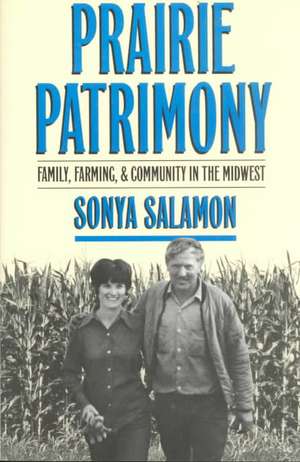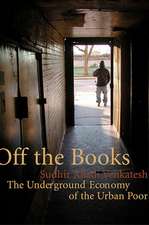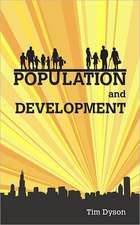Prairie Patrimony: Studies in Rural Culture
Autor Sonya Salamonen Limba Engleză Paperback – 18 iun 1995
Preț: 341.48 lei
Nou
Puncte Express: 512
Preț estimativ în valută:
65.34€ • 68.54$ • 54.40£
65.34€ • 68.54$ • 54.40£
Carte tipărită la comandă
Livrare economică 01-15 aprilie
Preluare comenzi: 021 569.72.76
Specificații
ISBN-13: 9780807845530
ISBN-10: 0807845531
Pagini: 320
Dimensiuni: 154 x 234 x 21 mm
Greutate: 0.49 kg
Editura: University of North Carolina Press
Seria Studies in Rural Culture
ISBN-10: 0807845531
Pagini: 320
Dimensiuni: 154 x 234 x 21 mm
Greutate: 0.49 kg
Editura: University of North Carolina Press
Seria Studies in Rural Culture
Textul de pe ultima copertă
Families cannot farm without land, and whoever controls land holds power over others in the farm family and the rural community. Yet in every lifetime, control of this scarce resource must be given up to the next generation. Drawing on her decade-long ethnographic studies of seven Illinois farming communities, Sonya Salamon demonstrates how family land transfers serve as the mechanism for recreating the social relations fundamental to Midwestern ethnic identities. With family land is passed a cultural patrimony that shapes practices of farm management, succession, and inheritance and that ultimately determine how land tenure and the personality of rural communities evolve. Half the communities Salamon studied are dominated by families of German descent and half by what she terms "Yankees", or people with British Protestant ancestry. These two groups are dominant in the rural Midwest, and ethnic identity as manifested among them is a powerful force shaping the social fabric of the region. Yankees treat farming as a business and land as a commodity; profit rather than persistence of the farm motivates their actions. Farmers of German descent, however, see farming as a way of life and land as a sacred family possession, and they hold continuity of farm ownership as the highest priority. The commitment of ethnic Germans to act on their beliefs in this regard, says Salamon, explains why this group now makes up more than half of the Midwestern farm population.


























